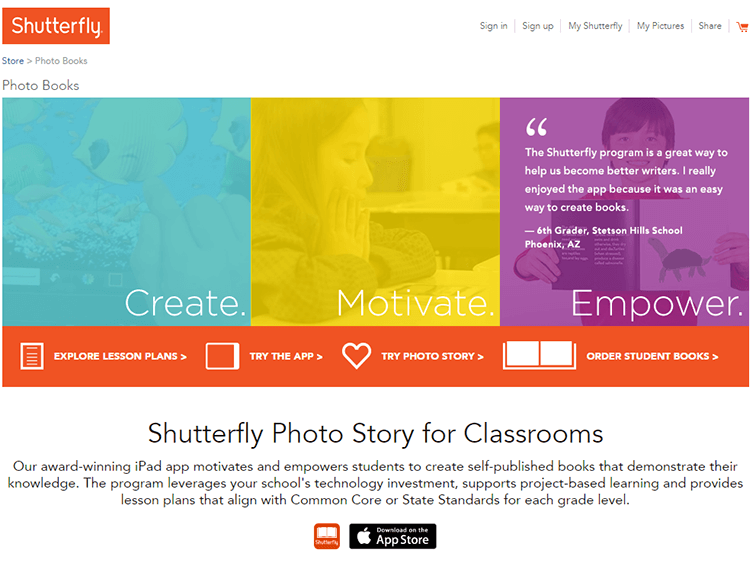How I Use Photo Story For Classrooms
contributed by Theresa Eckler
After beginning my career teaching third and fourth grades in New Hampshire, I moved on to a new position in Troy, New York to be with my husband.
I soon realized that my classroom in Troy was going to be a much different experience. In New Hampshire, there was a 1:1 program initiative where digital tools were provided and encouraged. In New York, this was not the case. I teach at Turnpike Elementary School, a Title 1 school that did not have any classroom digital tools. But, as I have a master’s degree in Educational Computer Technology, I knew the huge advantage that digital devices in the classroom can provide to my students. To be prepared for high school, college and a career, students must know how to navigate and use these digital devices properly.
Seizing the initiative, I set out to raise funds to buy technology for my students. I reached out to donors through selected fundraising websites like DonorsChoose.org, GoFundMe and Adopt-A-Classroom, where people around the world could donate. I involved the students as much as possible in raising the money to give them a sense of ownership, and an appreciation of how much iPads and other digital tools cost, so we sold classroom projects to the community and wrote thank you notes to the donors. We raised enough to buy eight iPads for my classroom in the first year.
Knowing that I had to incorporate the iPads into my classroom slowly so as not to overwhelm the students and hold back progression of my curriculum, I decided to develop one unit of the writing process digitally. Using Shutterfly Photo Story for Classrooms, an iPad app with which students can create their own self-published books, I introduced the informational unit by assigning a nonfiction book to the students on a topic of their choosing.
After being introduced to the project, my students began the researching and writing stages. When the class was in the library, they read nonfiction books to become familiar with the structure of writing, and why the author chose a particular style. I was amazed at how students began reading as writers, and not just as an outside reader. As they drafted their books on the Shutterfly iPad app, every day we presented a feature of the app, and let the students explore, while reminding them that they are the authors. We spent a lot of time teaching the kids about the layouts that relate to the topic they chose for their book. For examples, when creating a book about sand dunes, I tried to guide them to pick a sand-colored background.
Throughout the writing unit, I utilized other content areas we covered to integrate subjects. For example, using proper nouns while talking about social studies or looking at maps and discussion why an author would include a map in a book and how they are useful for a reader.
Because I have an inclusion classroom which combines general education students and students with special needs who receive specialized instruction, I implemented a co-teaching model with special education teacher, Samantha Brown, to share the responsibility of meeting every student’s needs.
Photo Story for Classrooms allowed all students to feel successful no matter what their learning level. With features that include speak-to-text, variable font sizes, and drawing their own pictures into the book, every student was included in the story-making process. Just being able to type out a story instead of struggling to read their handwriting was a huge advantage. The finished products are so similar you can’t tell they come from a variety of learning levels. There are many different things students can achieve with this app that they can’t when using pencil and paper.
Introducing the iPad gradually to the students through one iPad app during our writing time, and introducing a feature of the app each day, allowed the digital learning experience to be consistent and strong, but not overwhelming.
For next year, I plan to expand the use of the photo stories in general by having students create a classroom book—a guide to rules, what they learned in the first couple months of school, and a page introducing each student in the class.
In her eight year of teaching, Theresa is a second grade teacher at Turnpike Elementary School in Troy, New York. She graduated in 2008 from the University of Maine with a Bachelor’s in Elementary Education and a minor in Mathematics. From there Theresa worked to achieve her Master’s Degree in Educational Computer Technology from Plymouth State University.
How I Use Photo Story For Classrooms

